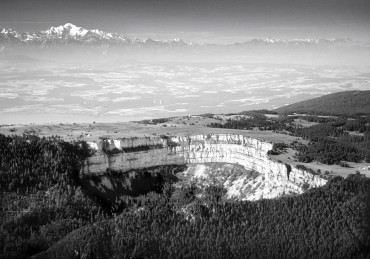
Overview of the Creux du Van with the alps in the background
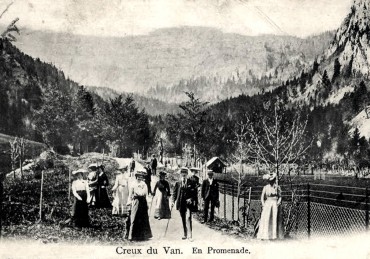
Historic view to the Creux du Van from Noiraigue
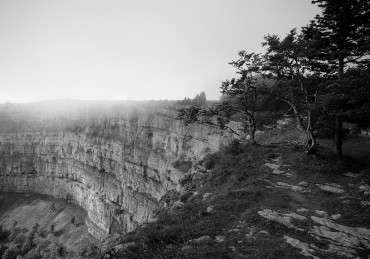
View at the edge of the cliff
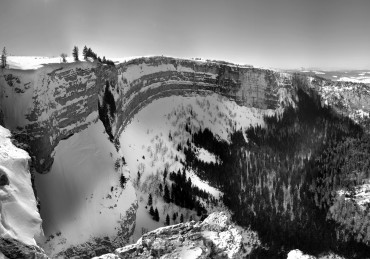
Extreme climate situation in Winter
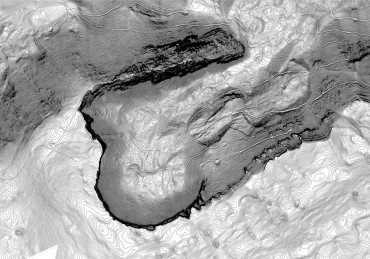
Topographic condition

The sub-alpine mountains range \"Jura\"

Fundamentals of Soil Science and Soil Biology, J.M.Gobat, M. Aragno, V.Matthey
28.8.2013 – Issue 12 - Earth – Steinemann Ramias – Essays
BUILT EARTH: CREUX DU VAN, JURA
by Ramias Steinemann
The Jura Mountains are a sub-alpine mountain range located north of the western Alps, separating the Rhine and Rhone rivers and forming part of the watershed of each. At the entrance of the Val du Travers the huge falaise formation of the Creux du Van builds up. On the top of this plateau, about 1400m above sea level, a spectacular surrounding view opens to the east over the midland of Switzerland to the alps and to the west towards France. The Creux du Van forms an intersection of the rolling smooth landscape and a rugged cliff in the form of a natural rock amphi-theatre. The cirques results of erosion by aglacier in combination with erosion by freeze-thaw weathering. The former sturdy cliffs became unstable after the draw back of the glacier. The instability was reinforced through the ongoing erosion by the river „Areuse“, which is the last, still continuing forming act of the Creux-du-Van.
Historically the unique natural habitat remained unsettled for long, al¬though the Romans used the valley of Travers as a transit route between the swiss „Mittelland“ and the region of Pontarlier. The harsh climate with lots of wind, rain and freezing winters prevented from an early settlement. With the the clearing of the primeval forests in the late Middle Ages, the region got populated permanently.
Situated at the border of north from south and the border of the language between Latin and German, the area of the canton Neuchatel developed anachronistic. In contrast to the rest of Switzerland, the area was more a land of exchange : During their 1000 year long integration into the helvetic federation in 1848 different rulers from many places were running the Canton. During the invasion of Napoleon it was even splitted from the Swiss confederation.
Due to the geographic situation and the specific condition of the ground the landscape and flora changes spectacularly on a small distance: there are forests and arctic-alpine flora in the rock arena, unique flowers in the high meadows and on the bottom of the moraine in the crater a dense wood of spruces and beeches. Chamois, ibex, lynx and numerous other wild animals inhabit the pristine natural landscape. In 1876, after a long period of reinforced erosion due to the de¬forestation, a msall group called “Club Jurassien” acquired the whole area for 1’200 francs. It was the establishment of the oldest nature reserve in Switzerland. Numerous Swiss scientists like Paracelius, Konrad Gessner, Jean Jacques Rousseau and Albert von Haller were visiting the site to see the natural phenomena and to study its world of animals and plants.
The focus of projecting there an interpretation center is therefore the place of vision and contemplation connected to this scientific knowledge of the physical and cultural landscape. Attached to the earth, geology and topography as well as to the distant view, the project should extend the presence of the nature for the visitors.
Download article as PDF

